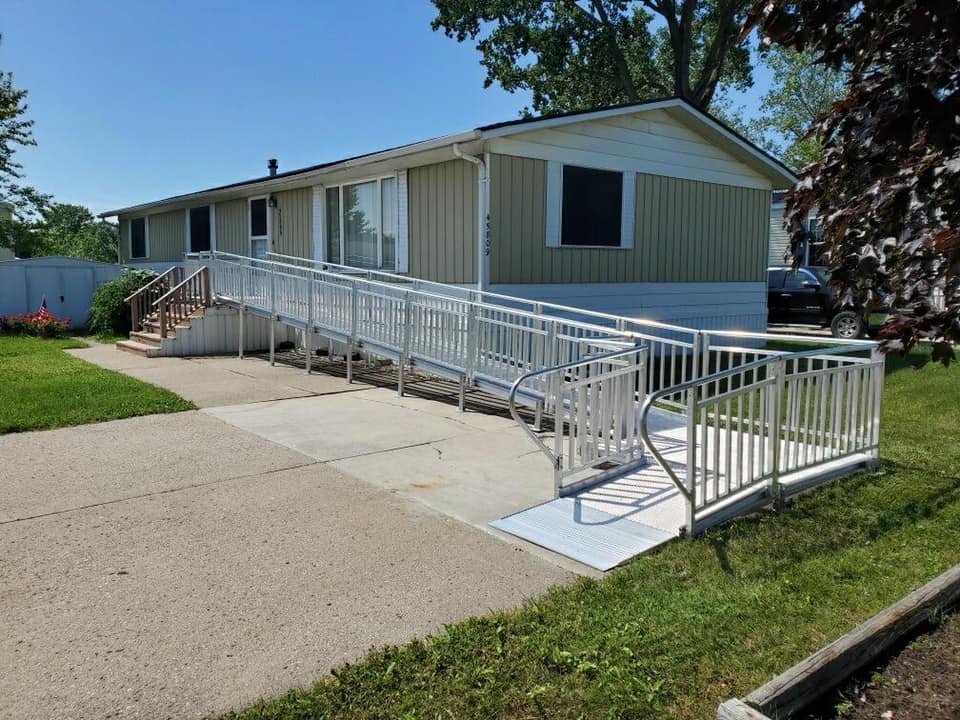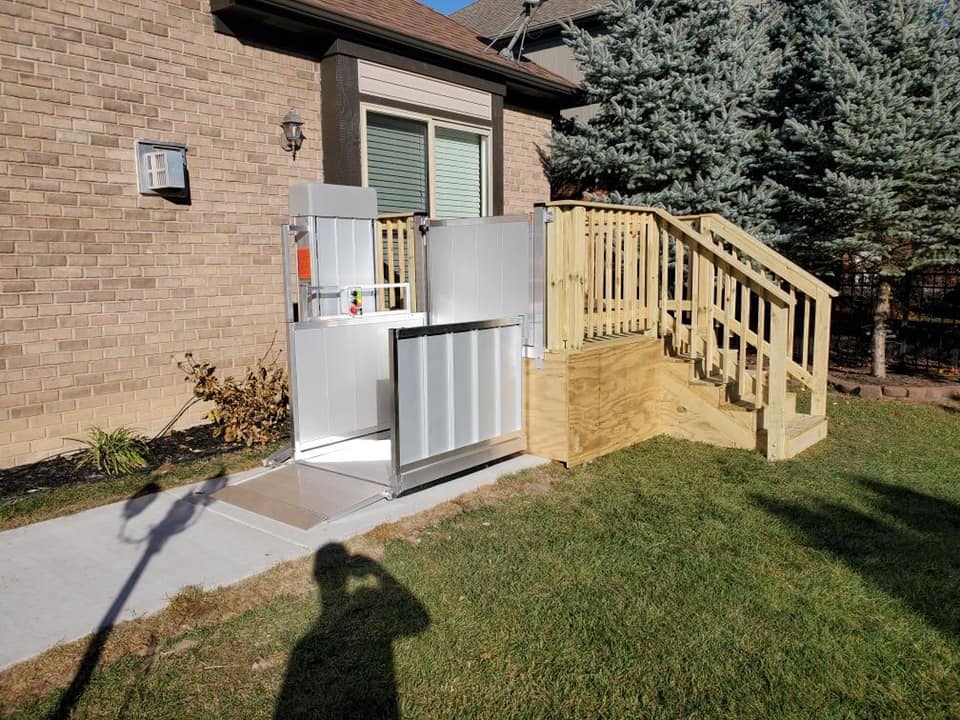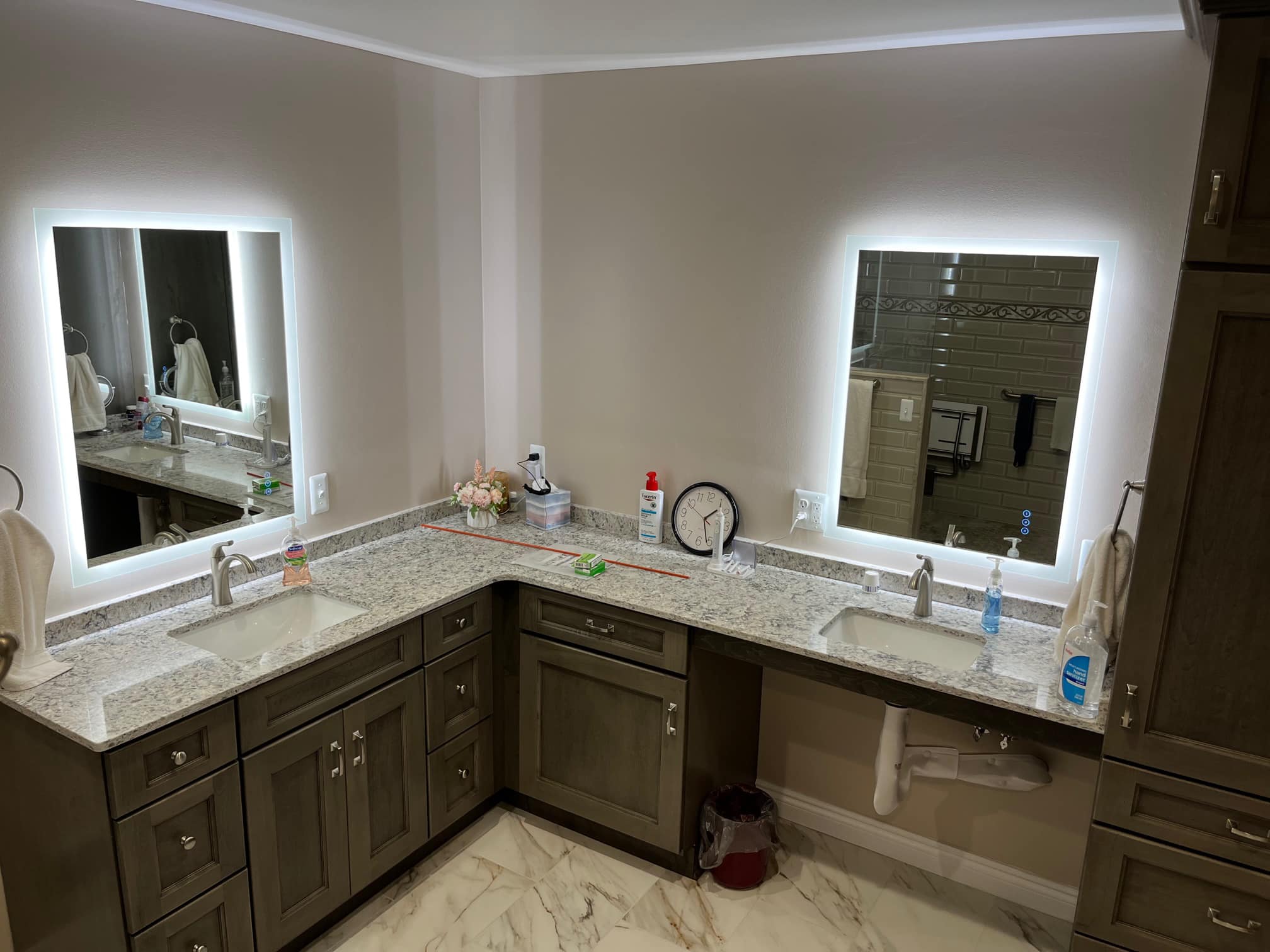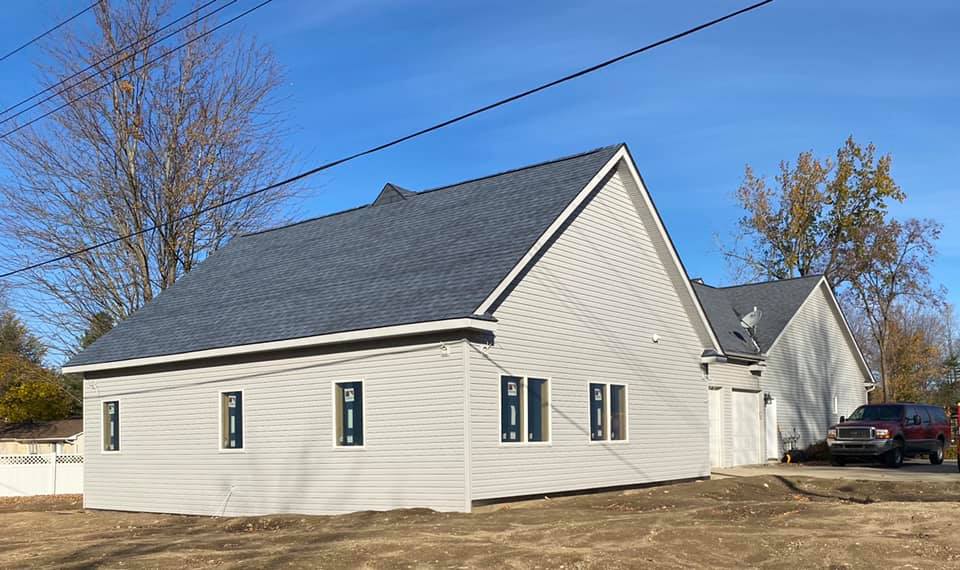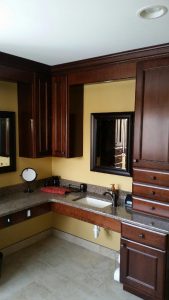 Barrier Free Plus, Inc. specializes in Handicap Bathrooms in Macomb County, Michigan. Call (586) 598-2600 today for more information.
Barrier Free Plus, Inc. specializes in Handicap Bathrooms in Macomb County, Michigan. Call (586) 598-2600 today for more information.
ADA Guidelines for Handicapped Bathrooms
ADA (The American with Disabilities Act) guidelines regulate the construction and compliance of handicapped accessible bathrooms. We will present here a list of the most common guidelines that must be followed. Remember to consult strictly with ADA for other applicable guidelines.
ADA Guidelines: Grab Bars
Grab bars might not be replaced by towel bars. The grab bar hand rail must be fully anchored with a smooth surface that can be easily grabbed. The diameter of the pipe used for this kind of purpose must be between 1-1/4 to 1-1/2 inches. ADA grabbed bars hand rail must be installed between 34 and 38 inches off the ground. Furthermore, keep in mind that there must be a separation between the grab bar and the surface where it is located of at least 1-1/2 inches. That space will provide room for proper grab and allow the hand to firmly grab it. As a matter of security the bars must contain round edges and the handrail must be returned to the connection to posts or walls. This will prevent someone to get hurt by a sharp pointing object.
ADA Guidelines: Clear floor space
A clear space with minimum dimensions of at least 30″ x 48″ must be provided to accommodate a single wheelchair. This space must be designed for a forward or parallel approach to the equipment. Sometimes that clear space will be located under current fixtures, as long as there is enough room and space to allow legs to move freely under those spaces when sitting in a wheelchair.
ADA Guidelines: Rotating Space
A single wheelchair must rotate freely inside a bathroom. For this kind of motion at least 60″ in diameter is required to complete a 180 degree turn. As well as the clear space, sometimes that required space could be computed beneath fixtures.
ADA Guidelines: Lavatories
A handicap lavatory, at least one, must extend at least 17″ from the back wall and have a clearance of at least 29″ from the bottom of the apron to the finished floor. The lavatory, must not be installed at heights greater than 34″. If the lavatory is installed in a counter top, it should be placed no further than 2″ of the front edge for maximum accessibility.
ADA Guidelines: Handicap Toilets
Handicap toilets must have a minimum width of 60″ and sufficient space to accommodate the wheelchair to the sides of the toilet or in front of it. Also, required horizontal grab bars must be installed behind the toilet and on the nearest wall or partition, whichever is closer. Sometimes the required space cannot be achieved due to space restrictions in existing facilities, so an alternate compartment is required. Toilet seat heights must be between 17″ to 19″ above the finished floor. The lever for flush control must be placed on the open side of the toilet with the clearest floor space and mounted no higher than 44″ above finished floor.
ADA Guidelines: Hand Dryer
Hand dryers are one of the requirements easiest to comply with. ADA guidelines ask to provide hand dryers that must be either motion activated or touch free devices. In the past, there were push-button activated dryers; these dryers must be removed specially in public areas where you should have handicapped accessible bathrooms. Make sure you are providing touch free equipment to comply with ADA guidelines; otherwise you could be exposed to several fines and other legal actions. If you are installing new hand dryer equipment, it is very important to follow ADA design guidelines and regulations. One of them is the regulation from ADA regarding the location of a hand dyer and its depth from the wall. Most of the today hand dryers don’t have sensors alerting blind people of their location. Because of this ADA specifies that the hand dryer must not protrude from the wall more than 4 inches. If this rule is not met, there is a significant chance that a blind person can hit the hand dryer and can possibly be injured. Remember to verify prior to construction with the proper and current required codes and gudelines at the moment of installation for better compliance with the law. source: construction.about.com
Barrier Free Plus, Inc. can build you the perfect Handicap Bathroom in Macomb County or Oakland County, Michigan that fits your exact needs! Call (586) 598-2600 today for more information.

